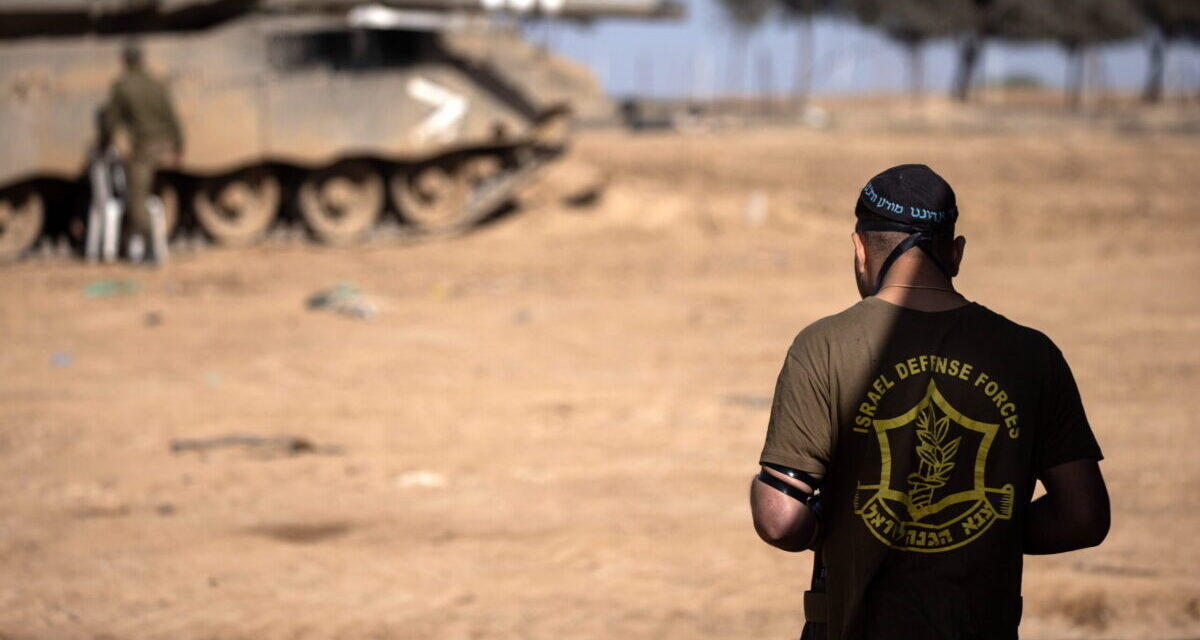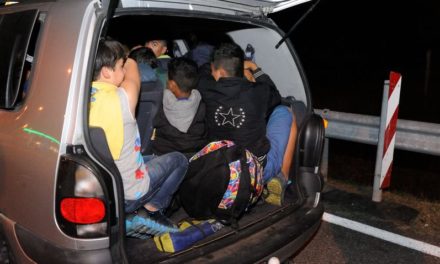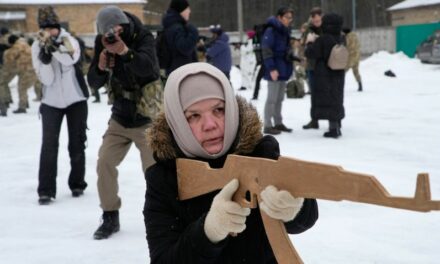If someone is angry at the insulted pride of members of a barbaric terrorist group, they probably have a problem with their moral compass.
The mass murder and rape of Israelis on October 7 resulted in a surge in anti-Semitism, not anger against Hamas. Still, the world does not tolerate photos of defeated Palestinian terrorists.
In this regard, Neokohn published an opinion article by Jonathan S. Tobin, editor-in-chief of the Jewish News Syndicate.
Last week I was going to speak live on WION, an English-language Indian television network, about the war against Hamas. However, before my turn, I was shocked by the presenter's introduction. He talked about images that shocked the world and caused the world to be outraged, giving a trigger warning, so to speak, to those who will see these images for the first time.
As I soon learned, he was not referring to evidence of unspeakable atrocities committed by Hamas terrorists against Israeli civilians on October 7th. And he didn't even address the impact of the post-attack war on civilians in the Gaza Strip, who are being used as human shields by these same terrorists.
Instead, the images that really outraged him (and apparently others around the world) were those of Palestinians surrendering to the Israeli Defense Forces.
The images show military-age men who have either surrendered or been captured, allegedly after being forced to leave the terrorist organization's tunnel network.
The men are with their heads down, kneeling, stripped to their underwear, and their hands are tied. The pictures reeked of defeat. Those who not so long ago bragged about the unspeakable suffering caused on October 7, when Hamas succeeded in murdering more than 1,200 Israeli men, women and children, raping and torturing the victims and kidnapping more than 230 people, are now the powerless they became prisoners. The courage they showed after the attack on Israel is gone.
Their faces showed the impact of defeat and perhaps the realization that their leadership had miscalculated that those who once ruled Gaza could start a war against Israel with impunity.
While senior Hamas leaders live in luxury and safety in Qatar, the terrorists are now paying the price for their stupidity and cruelty.
For those who know the history of warfare in the last century, this sight is hardly unique.
Similar pictures depict the Japanese soldiers who fought in World War II. surrendered in World War II, as well as other combatants fighting in various wars, especially against terrorist groups. When faced with those who have been indoctrinated with a fanatical hatred of their enemy, and who will likely continue to kill after surrendering, stripping the prisoners and ensuring that they are not still armed or carrying explosive devices is just plain logic.
The alternative would be that members of a group committed to the destruction of the state of Israel and the slaughter of its people, according to their beliefs and political goals, could kill Israelis who believe that their opponents have already given up.
Are such pictures humiliating for the people in the pictures? Naturally. But if one is angry at the insulted pride of members of a barbaric terrorist group, one probably has a problem with one's moral compass.
The segment on this issue wasn't the most elevated discussion I've been a part of. I questioned host Mohammed Saleh's assumption that it was outrageous and tried to remind him of the context. He tried to exaggerate, while the images shown during our conversation were clearly part of an attempt to make the Israelis the villains of the story. Saleh seemed to have trouble grasping the concept that the Palestinians could be anything other than victims in any interaction with Israel.
Nor did he seem to understand that what the Palestinians and their sympathizers were protesting was not genocide, but a natural consequence of the war they had waged.
But he was not alone in his interpretation. Indeed, news sites and channels around the world shared his position. Predictably, so did The New York Times, which described the capture of military-age men in areas that most civilians had largely abandoned weeks ago as a "mass detention of Gazan men."
The photos were treated as evidence that the IDF rounded up innocent bystanders as part of a cruel policy against poor, oppressed Arabs, rather than what happens to those believed to be combatants when the army captures them when a previously conducts a clearance operation in terrorist-held areas.
It is true that a small part of those arrested turned out not to be members of Hamas.
Those determined by the IDF not to be members of the Islamist terrorist movement were later released.
Conspiracy theories spread on social media about those held in this way, that the prisoners were killed or tortured, are easily debunked.
But the uproar over the photos pales in comparison to the widespread and completely false accusations of genocide leveled against Israel by those who sympathize with Hamas or simply hate the Jewish state. After all, taking pictures of captured Palestinians in their underwear is a very minor offense compared to accusations based on unreliable, inflated casualty statistics provided by Hamas, which claim that all those killed in Gaza are civilians, most of them children.
These numbers - which, as in Hamas' previous conflicts, probably have little to do with reality - and the images and videos of the devastation caused by the war on Gaza provide ammunition for those determined to disparage Israel.
They also support the demands of leftists inside and outside the Biden administration for a lasting ceasefire that would allow Hamas to keep at least the parts of the Gaza Strip not yet occupied by Israel under Hamas control, essentially leaving that a group bent on genocide of the Jews could get away with mass murder.
However, the furor over the photos of captured Palestinians is still significant.
The main reaction of much of the international community to the largest mass slaughter of Jews since the Holocaust was not so much indifference as outrage that Israel would use military means to ensure that such a terrible crime could not be repeated.
That so many people, oblivious to the massacre of Jews by Hamas two months ago and ignored the widely distributed photographic and video evidence (much of which the terrorists themselves put together with GoPro cameras to publicize the humiliation of their victims) of these of crimes, continues to deeply shock the Jews.
So is the hypocrisy of feminist leaders and organizations who seem unconcerned that the Palestinians are deliberately using gender-based violence—against women, children, and, new reports show, even men—as a weapon of war.
These crimes against the Jews were ignored or quickly forgotten while Israel was hastily stripped of its right to defend itself.
It soon became clear, even to many Jews who had always been critical of Israeli policies or who sympathized with the plight of the Palestinians, that the protests showed that there was something deeply troubling behind the outrage over the fighting in Gaza.
Those who chanted "from the river to the sea" for a "free Palestine" were not calling for peace or a two-state solution. Their position was that Israeli suffering is irrelevant because the Jewish state has no right to exist and must be "colonized". If this meant more October 7-type atrocities, so much the worse for the Jews, who were allegedly guilty of having "white privilege" and oppressing "people of color."
The fact that this conflict has nothing to do with race - and that the Jews are indigenous to Israel and the majority of Jews are "colored" immigrants from other parts of the Middle East and North Africa - matters little to those who who buy into intersectional myths and believe that the Jewish state should be abolished and its people subjected to genocide.
But the images of Palestinian prisoners resonate with people around the world and go a long way to explaining why the Palestinian Arabs, with the support of much of the Islamic world, persist in their century-long war against Zionism.
It is hardly surprising that images of Jewish suffering do not resonate with the non-negligible portion of the world's population who believe that Jews have no right to sovereignty or self-defense in their ancient homeland.
But what they really can't stand is the idea that Jews are no longer stateless and vulnerable to a hostile world, as they were before Israel was founded in 1948.
It is hard for them to swallow the idea that a despised minority against whom the virus of anti-Semitism continues to fuel mindless hatred and demonization is now strong enough to defeat its enemies.
This goes beyond sympathy for the Palestinians.
They are trapped in an irredentist mindset that not only prevents them from accepting the repeated offers of statehood and peace that Israel has made over the years, but leads them to see the rejection of the legitimacy and permanence of the Jewish state as inextricably linked to their national identity.
The photos of Hamas prisoners are not particularly unusual or outrageous by the standards of war photography, and they are certainly not evidence of abuse.
Documenting their detention is certainly better than the silence that Hamas continues to maintain about the fate of the hostages, who have not yet been released and for whom we have no evidence that they are alive at all.
Yet the images seem outrageous to those who, whether Muslim or not, see Jews as what the Islamic world traditionally calls dhimmis. In Islamic societies, dhimmis were "protected" residents of a particular country, but were treated as inferior to Muslims.
In fact, the photos are causing outrage because they show that Hamas, which rightly expected its atrocities to provoke a resurgence of anti-Semitism rather than a counterattack against them, is losing its war against the Jews.
Their humiliation proves that their perception of the world has been turned upside down, and that Jews are no longer classified as a despised and powerless minority.
Outrage over images of Palestinian prisoners is not a reaction to evidence of Israeli crimes. Instead, it demonstrates that the proliferating anti-Israel protests in the United States and elsewhere have largely anti-Semitic motives, whether rooted in modern left-wing ideologies or historical religious hatred. The anger over the photos is not a sideline to the debate about the war, but rather shows how deep-rooted intolerance towards Israel and Jews is.
Cover photo: Southern Israel, November 24, 2023.
An Israeli soldier prays at an assembly point in southern Israel, near the border with the Gaza Strip, on November 24, 2023, after a four-day ceasefire between Israel and the Palestinian Islamist group Hamas, which controls the Gaza Strip, came into effect. .
Hamas militants launched an attack on Israel on October 7, and the Israeli army responded by carrying out air and ground operations in the Gaza Strip. MTI/EPA/Christophe Petit Tesson












